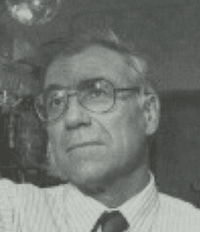James White
1935 – 2020
James (Jim) D. White, a creative and prolific organic chemist who made important contributions to the field of target-directed synthesis, died on February 10, 2020, in Albany, Oregon, at the age of 84.
Jim was born in 1935 in Bristol, England, and he spent much of his childhood living in India after his adventurous father relocated the family there during World War II to avoid the tumult of the Blitz. Returning to the U.K. following the end of the war, he completed his school days in Tiverton, Devon, and after mandatory post-war national service as a Pilot Officer in the Royal Air Force, he pursued higher education at Queen’s College, University of Cambridge, graduating with a B.A. degree in Natural Sciences in 1959. Jim then left England with his first wife Muriel to pursue graduate studies at the University of British Columbia, where he received a M.S. degree for research work conducted in the laboratory of Raymond Bonnett. In 1961, he moved to the Massachusetts Institute of Technology to continue his studies with George Büchi, writing his Ph.D. dissertation on a total synthesis of thujopsene and the isolation and structural elucidation of mitorubrin and mitorubrinol, two metabolites from Penicillium rubrum. Jim took up his first independent academic appointment as an Instructor at Harvard University in 1965 and advanced through the ranks there to the level of Associate Professor. In 1971, he moved back to the Pacific Northwest, this time to Corvallis, Oregon, to join the Chemistry faculty at Oregon State University, where he spent the rest of his long and productive career. Jim officially retired from OSU as Distinguished Professor Emeritus in 2003, but he remained active in all aspects of academic life up until very recently. Even in retirement, and except when he was away enjoying his great passion for travel, it was rare not to find him in his office working on manuscripts and other scientific projects and he was always up-to-date on the machinations of campus politics.
A product of his mentors, and greatly inspired by the time he spent at Harvard working alongside the likes of R. B. Woodward and E. J. Corey, Jim’s life’s pursuit was the total synthesis of complex natural products. In this endeavor he excelled. A J. D. White total synthesis is unmistakable for its elegance and characterized by the execution of unusual strategies often based on recently introduced transformation types that had yet to enter the mainstream at the time of its conception. In this regard, Jim was a leader in the field of target-directed synthesis and a common reaction to seeing a new J. D. White synthesis (always of important and well-chosen molecules) would be, “I wish I had thought of that!” For example, Jim’s synthesis of codeine incorporates a stereospecific intramolecular Rh(II)-catalyzed CH insertion transformation to forge the D-ring from a complete phenanthrene template; this effort was amongst the first to exploit Taber’s findings beyond simple model systems and many years before Du Bois and others began to systematically explore CH functionalization as a general tactic for complex molecule synthesis. Jim was also an early adopter of ring-closing olefin metathesis (RCM) in the arena of natural products total synthesis; here, the targeting of alkaloids such as australine and pinnaic acid via transannular reactions of unsaturated azacyclic precursors generated by RCM is notable. Photochemical transformations also featured prominently in Jim’s work over the years. A beautiful demonstration is found in his synthesis of byssochlamic acid, one of the so-called nonadride natural products, via a non-obvious [2+2] cycloaddition/cycloreversion approach to construct a nine-membered ring from a transient strained polycyclic intermediate.
Beyond their meticulous construction at the strategic level, Jim’s syntheses are filled with creative gems that emerge during the course of requisite interconversion sequences that others would achieve in the most prosaic manner. A favorite example of mine in this regard is found in his synthesis of the terpenoid botryococcene, wherein a β,γ-unsaturated α,α-disubstituted methyl ester is generated by a spontaneous fragmentation-recombination process from an α,β-unsaturated MOM ester. Notwithstanding his contributions to the art of synthesis, Jim’s work served to establish the gross structural and stereochemical constitution of many notable natural product molecules, including: nepetaefolin, stemodinone, leptosphaerin, nemorensine, curacin A, and 7-epicylindrospermopsin.
A prolific author with more than 230 publications to his name (the latest in 2019), Jim White served on the editorial boards of several important international journals and periodicals, including Organic Syntheses (1983-1991; editor-in-chief 1989) and Organic Reactions (1991-1997). He was an Associate Editor for the Journal of the American Chemical Society from 1989 until 1994, and served as U.S. Editor for Chemical Communications from 1996 until 2004. He was the recipient of numerous national and international awards including a Guggenheim Fellowship (1990), the Centenary Medal of the Royal Society of Chemistry (1999), the American Chemical Society Arthur C. Cope Scholar Award (2003), the Wyeth-Ayerst Research Award of Columbia University (2000), the Medical Research Foundation of Oregon Discovery Award (2004), and the 2006 Oregon Outstanding Scientist Award of the Oregon Academy of Sciences. In 1995, he was awarded an honorary Sc.D. degree from his alma mater, the University of Cambridge.
In his private life, Jim was an active sportsman who enjoyed tennis, skiing, and sailing, pursuits that he shared with his second wife Valerie Bishop, who sadly predeceased him. He loved to travel, for both work and pleasure, and he was a common sight at scientific meetings around the world and on excursions to exotic places organized by the MIT alumnae program with his partner Wendy McKee.
Jim White is survived by his daughters, Julie White and Amy Blake, and his grandchildren, Joanna White, Logan Blake, and Andrew Blake. Well known and widely admired in the synthetic chemistry community, he was a friend and a respected colleague to many and he helped to shape the careers of a large number of graduate student and post-doctoral coworkers, myself included. He will be greatly missed.
Paul R. Blakemore
Corvallis, Oregon


